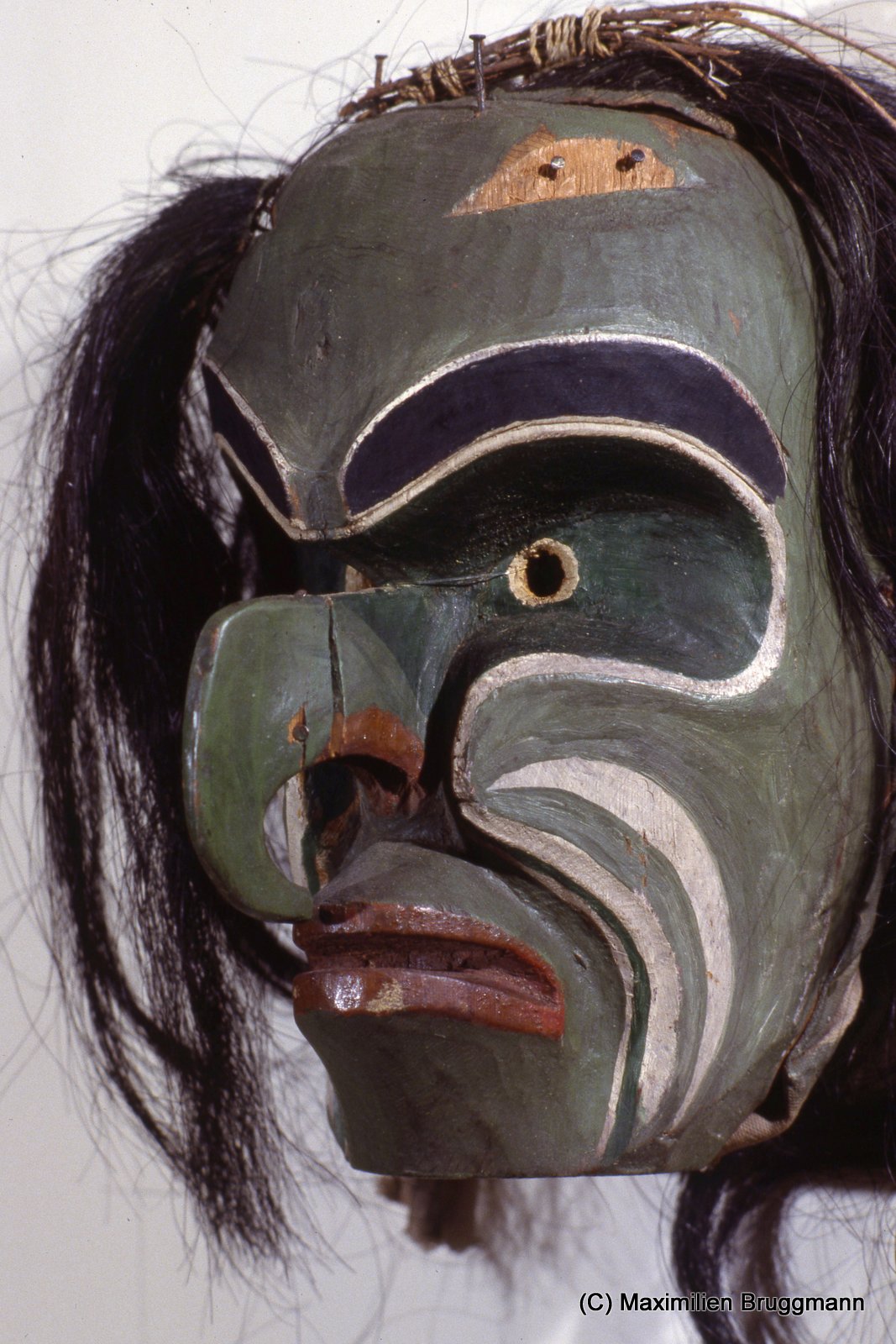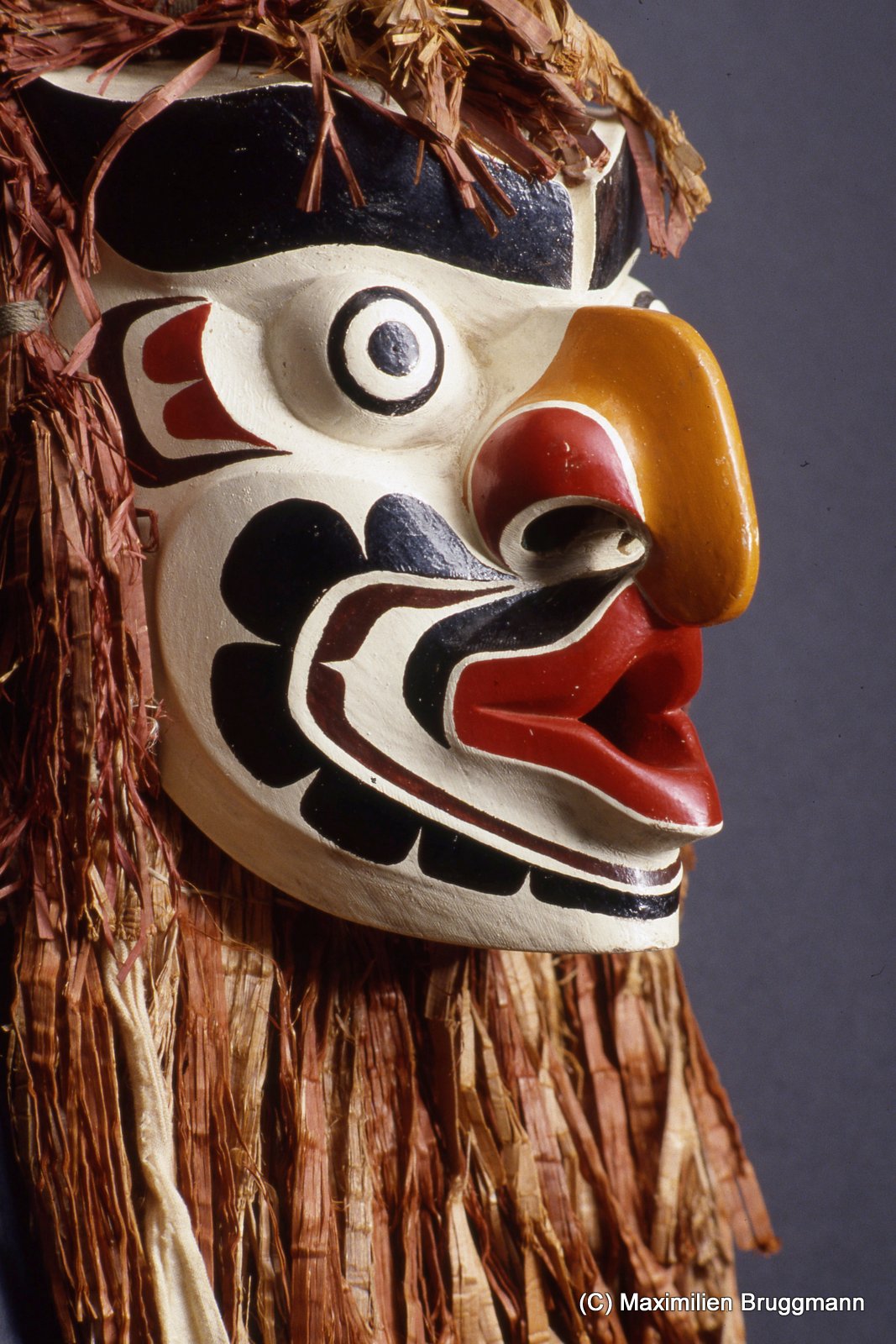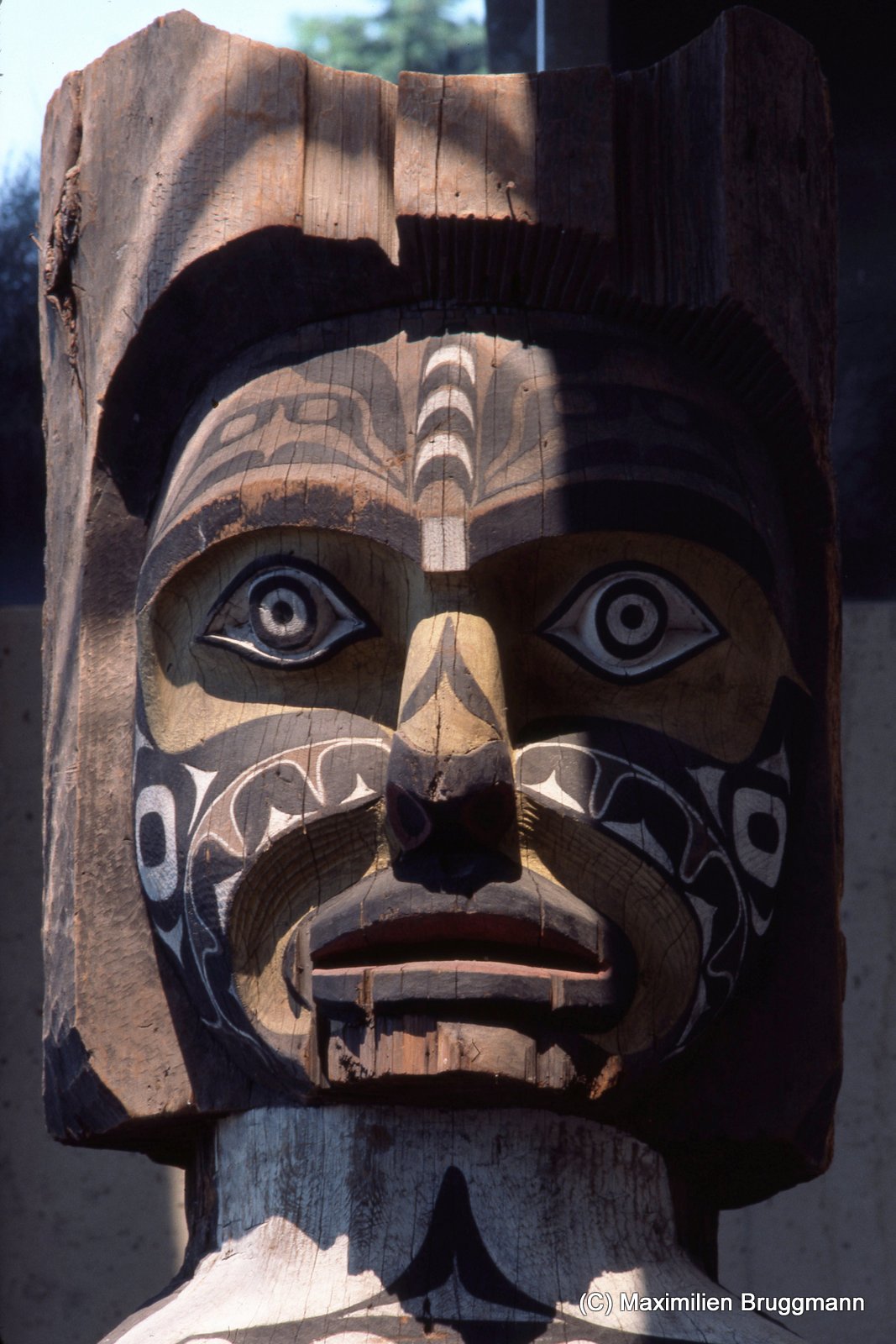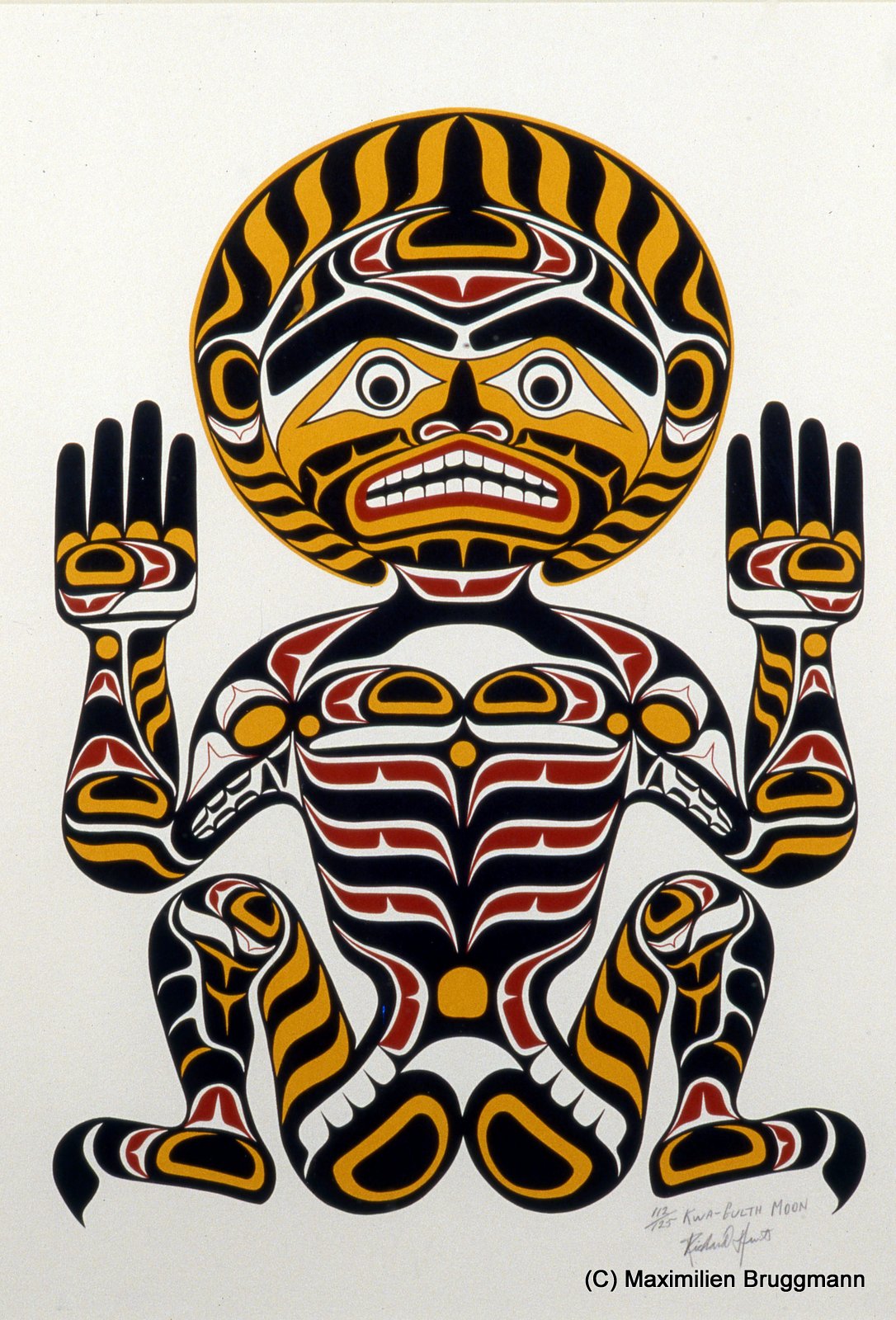
Masque Kwakiutl « Lekwiltok » représentant Bookwus, le monstre de la forêt sauvage. Confisqué en 1922 avec d’autres produits de potlatch, ce masque a été rendu en 1979 au nouveau musée Kwakiutl de Quathiaski Cove, situé sur l’île Quadra, en Colombie-Britannique. (P135).

62 Le masque de danse Atlakin joue un rôle important dans la vie cérémonielle des Kwakiutl. Dans les forêts, les Atlakim sont des esprits de la Mort aux apparences diverses. Leur chef est Xamsalilala. Premier à mourir, il convoque ensuite les 39 autres esprits, chacun mourant à son tour dans la salle de cérémonie. Ce masque Xamsalilala a été sculpté dans les années 1940 par le célèbre chef et artiste Willie Seaweed (1873 à 1967), un Kwakiutl Nakoaktok de Blunden Harbor, situé sur la partie continentale, face à Port Hardy. (27 cm; MOA)

66 Cette figure ancestrale (3,6 m / 12 pieds de hauteur), sculptée dans le bois de cèdre rouge, se trouvait à l’intérieur d’une maison Kwakiutl Koskimo à Quatsino. La partie inférieure montre deux esclaves portant une planche, servant sans doute de siège pour un chef. (MOA)

Richard Hunt, artiste Kwakiutl: « Kwagiulth Moon ». Sérigraphie imprimée avec des formes en U et S, ainsi que de la couleur jaune, caractéristiques typiques du style Kwakiutl. (65cm, 1978)
